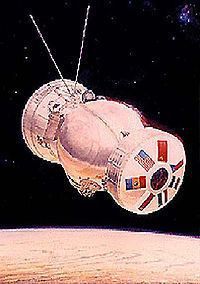Mission type Bioscience SATCAT no. 11536 Period 1.5 hours Launch mass 6,000 kg | COSPAR ID 1979-083A Mission duration 18.5 days Launch date 25 September 1979 Launch mass 6,000 kg | |
 | ||
Similar Kosmos 936, Kosmos 1514, Kosmos 1667, Gorizont, High Energy Astronom | ||
Bion 5, or also Cosmos 1129 (in Russian: Бион 5, Космос-1129) was a Bion satellite. It was a biomedical research mission involving scientists from nine countries. Among the experiments was the first attempt to breed mammals in space, which proved unsuccessful. The mission ended after 18.5 days. The mission had the cooperation of the former Czechoslovakia, East Germany, France, Hungary, Poland, Romania and the United States.
Contents
Mission
Organisms studied included:
Objectives
Bion 5 mission consisted of various biological studies, including the first mammalian reproduction attempts (rats) in space, which ended up not succeeding. Experiences NASA were designed to study the effects of radiation on mice, quail embryos and some plant specimens.
Studies on the effect of microgravity were also performed on the muscles and bones of rats and avian embryogenesis was studied in space. the effects of microgravity on plant tissues were investigated using carrots and carrot cancerous tissue to study the effects of space flight on the growth and development of plants. As in the previous mission, 30 rats for the species Rattus norvegicus were sent physiological studies; Seven additional rats were used in embryological experiments.
